There isn't much history to be gleaned from watching Gilligan’s Island, but the series had its moments. One of those was when the castaways met up with the inspiration for the famous pilot, Douglas "Wrong Way" Corrigan -- Wrong Way Feldman.
In fact, the seven stranded castaways meet up with Wrong Way Feldman twice.
Now, as many of you probably know, Wrong Way Feldman was as fictional as Gilligan’s Island, but his character was very much based on "Wrong Way" Corrigan.
(This is where you hopefully say, "You don't say, The TV Professor? Gee, I know nothing about "Wrong Way" Corrigan. Tell me more.)
So for those who think Gilligan’s Island is just a silly show with nothing you could possibly learn from it, what follows is something about the life of one of history's most unusual early aviators.
Today's "TV Lesson" Breakdown:
- Wrong Way Feldman or Wrongway Feldman?
- Who was Wrong Way Corrigan?
- Did Wrong Way Corrigan Really Get Lost – or Was He Lying?
- How Wrong Way Feldman, or Wrongway Feldman, Figures Into All of This
- What Wrong Way Corrigan Did After His Flight
- So Back to Wrong Way Feldman
- Wrong Way Feldman Returns to Gilligan’s Island
- Douglas "Wrong Way" Corrigan’s Final Years
Wrong Way Feldman or Wrongway Feldman?
First, just to vent. Gilligan’s Island episode spelled the character’s name as Wrongway Feldman, at least if we go by the esteemed website, IMDB.com. That’s fine. It was their show; they could do what they wanted with their characters.
But spelling Wrong Way Feldman as Wrongway Feldman feels incorrect, since in real life, the press referred to Douglas Corrigan as Wrong Way Corrigan, or often "Wrong Way" Corrigan and certainly never Wrongway Corrigan. From here on out, I'll ditch the quotes, and when discussing Gilligan's Island, I'll refer to Wrongway Feldman as Wrong Way Feldman.
Got that? OK, well, moving on.
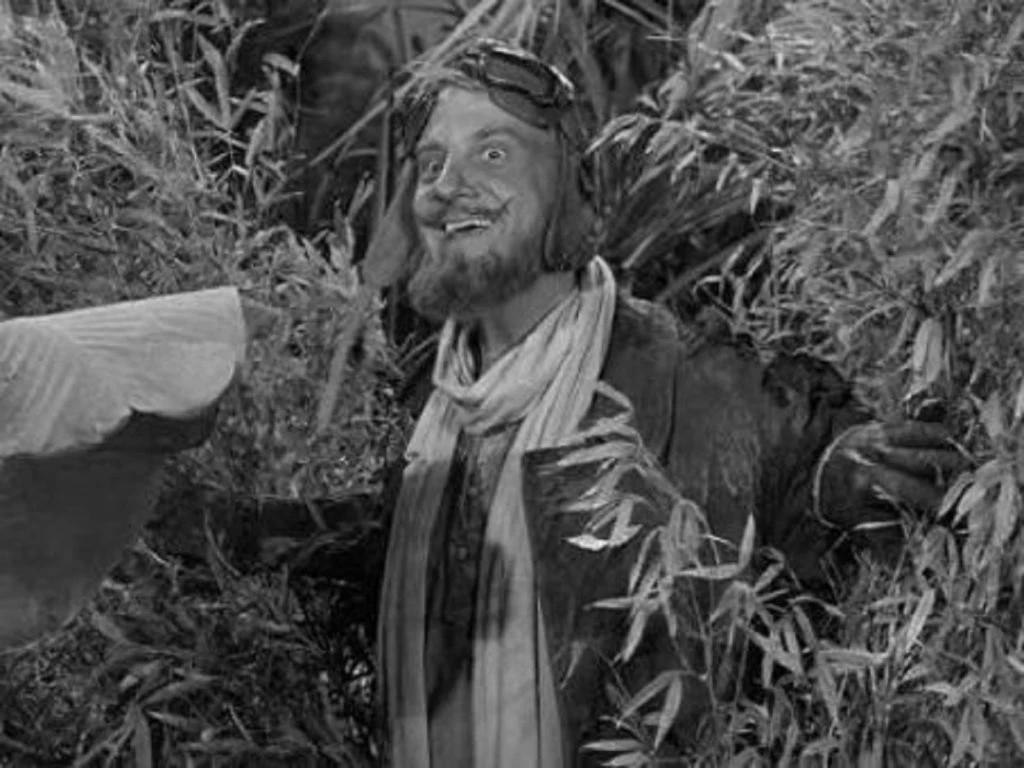
Who was Wrong Way Corrigan?
Douglas Corrigan was born Clyde Groce Corrigan in Galveston, Texas, in 1907, and grew up during a time when you could look up at the skies and see those magnificent men in their flying machines, as the name of the 1965 movie went. (There were female pilots up there, too; in 1911, Harriet Quimby became the first American woman with a pilot license.)
One of Corrigan's heroes was the movie actor Douglas Fairbanks, Sr., so much that he took his first name. But his lifelong hero was Charles A. Lindbergh, who, of course, was the first person to fly across the Atlantic.
Two years before that flight, Corrigan fell in love with flying. In 1925, Corrigan was 18 years old and took a 10-minute sightseeing airplane ride that cost him $2.50. He immediately decided that instead of becoming an architect, he would go into aviation.
Corrigan began taking flying lessons and became an aviation mechanic – and a good one. He was one of the mechanics who worked on the Spirit of St. Louis, the plane that Charles Lindbergh flew on his solo flight across the Atlantic.
Throughout the 1930s, ever since Lindbergh's triumph, Corrigan wanted to do something similar. But now that Lindbergh had done it, it was harder to find a some willing benefactor to spend money on a plane for another pilot to try it.
(The St. Louis Chamber of Commerce had sponsored Lindbergh’s plane, hence the Spirit of St. Louis. The chamber's thinking was that maybe St. Louis would become a city known for its aviation.)
At some point, Corrigan realized that if he was going to fly across the Atlantic, it would have to be done on the cheap. In 1935, he bought an old airplane from an airplane junkyard for either $900 or $310, depending on the source you want to believe.
Whatever he spent, for a plane, it wasn't much. My assumption is that he originally spent $310 and then over the years, as he made improvements, spent about $900 on his aircraft. Most newspaper accounts from the 1930s refer to it being a $900 plane.
Corrigan replaced the original 90-horsepower engine with a 165-horsepower model that he had pieced together from engines belonging to planes manufactured by the Wright Brothers' company. Corrigan installed five extra fuel tanks, which blocked his view from the plane – when he looked forward. He could still see outside the sides of the plane. Parts of the plane, including the cabin door, were held together with baling wire. Corrigan also had no radio, a safety concern for any pilot traveling over the Atlantic. Nor did he own a parachute.
So it will come as no shock to learn that the Bureau of Air Commerce, what would later become the Federal Aviation Administration, got one look at his plane – and refused to give him permission to fly across the Atlantic. But he was given permission to fly cross-country.
Corrigan kept making adjustments and improvements to his plane and kept seeking permission to fly across the Atlantic, and he kept getting rebuffed. It didn’t help Corrigan any once Amelia Earhart disappeared in the Pacific Ocean in 1937. Federal aviation inspectors were less eager than ever to have somebody make a dangerous solo flight across the ocean.
In 1938, Corrigan decided to fly from California to New York nonstop – and then back to California again nonstop. That was his plan.
Well, Corrigan landed in New York just fine. But on July 17, 1938, when he took off for the return trip to California – and this is where everything gets a little fuzzy, and you have to decide what you want to believe – Corrigan flew into a cloud bank and apparently got confused.
Instead of flying to California, Corrigan – above the clouds, unable to see land – was heading over the Atlantic Ocean.
Later, when it was night, it made visibility even more impossible. He just kept flying, assuming he was over the United States and headed toward California.
For sustenance, Corrigan had with him two chocolate bars, two boxes of fig bars and some water.
About ten hours into the flight, Corrigan noticed a leak in his fuel tank, which was leaking into his cockpit. (Corrigan had known he was flying with a leak; he apparently, however, thought it wasn't bad enough to keep him from taking off.) Worried that the fumes would overpower him, Corrigan used a screwdriver to punch a hole in the floor, so the fumes could escape.
Twenty-six hours into his flight, Corrigan was said to have discovered he was over the Atlantic and apparently going to land… well, somewhere. Which he did, after a 28-hour and 13-minute flight.
When he landed, Corrigan is said to have said (to stunned Irish airport officials): “Just got in from New York. Where am I?”
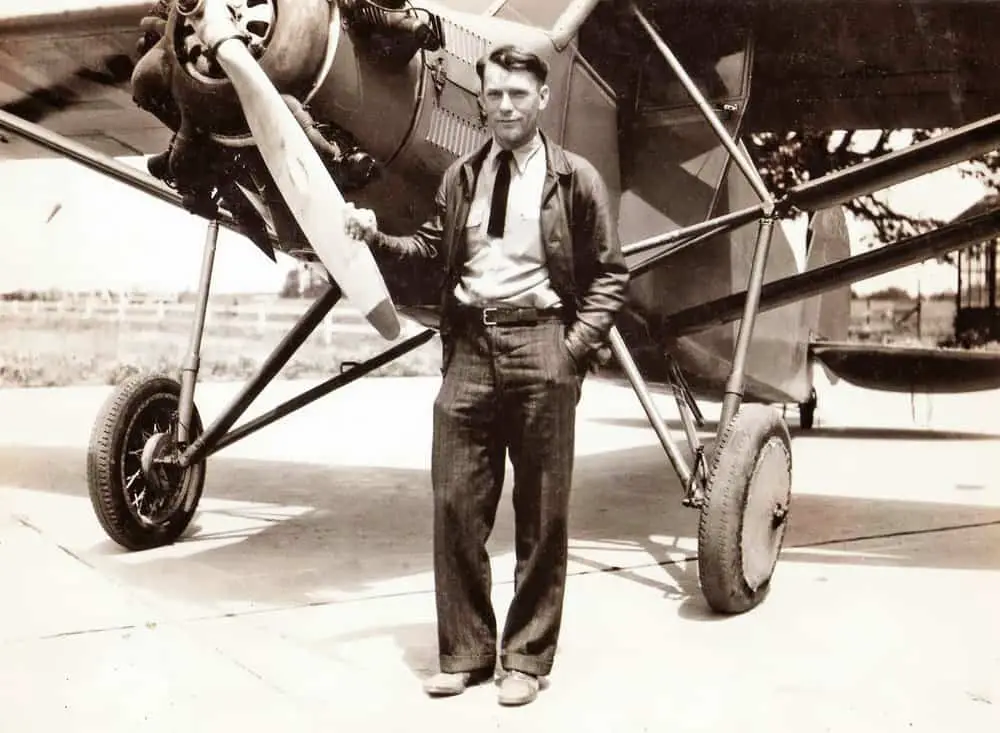
Did Wrong Way Corrigan Really Get Lost – or Was He Lying?
A lot of people believed his story, but most didn't. The smart money was that Corrigan didn’t get confused or turned around in the clouds. He wanted to fly across the Atlantic and kept getting turned down and simply decided to – and pretended to have gone the wrong way.
Whatever you believe, it’s a great story either way. Either Douglas Corrigan was kind of dimwitted or simply made an honest mistake and flew the wrong way – so that he traveled across the Atlantic Ocean instead across the United States. Or Douglas Corrigan was a scamp and pulled one over on the federal aviation authorities – by pretending he was disoriented.
Still, it seemed clear to everyone that Corrigan was making up the whole thing about being directionally-challenged. He was, after all, an accomplished pilot. In fact, throughout the 1930s, he was a stunt pilot. And we’re to believe he got mixed up and flew the wrong way?
Besides, as the old saying goes, rules are meant to be broken. Maybe Corrigan broke one.
A lot of people also poked holes in his story about the gas leak and punching a hole in the floor. It wasn’t that they didn’t believe there was a gas leak or that he made a hole – the airline officials and reporters covering the story could see that he definitely did. But if Corrigan thought he was over the United States, and that he had a serious gas leak, why not find a safe place to bring the plane down? If he knew he was flying over the ocean, then he would recognize that he couldn’t possibly find a safe place to land.
On the other hand, mistakes do happen, people do get lost, and Corrigan was insistent that he made a colossal error.
Either way, again, it was a great story, and the press and public – whatever you believed – found it incredible and inspiring that this pilot made his way across the Atlantic in what was basically a piece of equipment that had no business being in the air.
Reporters called his plane a “crate,” “a heap,” a “flying jalopy,” "creaky," and many other colorful monikers.
Whether Corrigan intended to fly across the Atlantic or not, people were just incredulous and in awe that he did. And they loved him for it. Corrigan became an instant celebrity. It probably didn’t hurt that he was good looking, amicable fellow who cut a dashing figure.
When Mrs. Howell on Gilligan's Island talks about Wrongway Feldman, shortly before he reveals himself to the castaways, she could easily have been talking about Wrong Way Corrigan when she said:
“Oh, I can still remember him from the newsreels. That jet black hair, and that slim waist and that flying suit. And that wonderful white scarf, flying in the wind. Aw, poor Wrong Way. I wonder if there's a chance he could've survived."
Wrong Way Corrigan wasn’t known for wearing a wonderful white scarf, but he did have a leather jacket that became his trademark look.
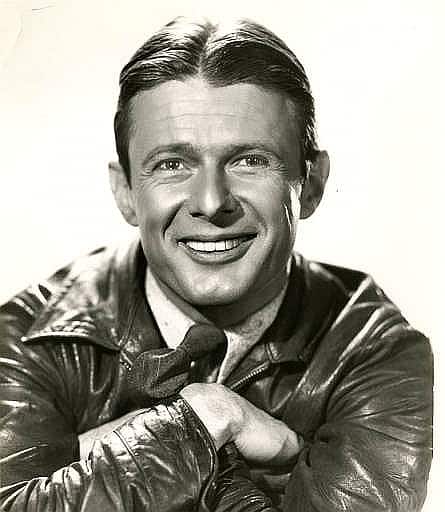
Corrigan was "punished" for breaking the law and flying across the Atlantic without permission. His license was suspended for five days, about the time it took for him to take a boat back across the Atlantic. The airplane was shipped back with him.
When Corrigan returned to the states, he received a hero's welcome with a ticker tape parade in New York City. An estimated one million people lined the streets, a larger crowd than had turned out for Charles A. Lindbergh after he returned from his flight to Paris in 1927. Corrigan received marriage proposals and was offered money for personal appearances at night clubs, though he turned all of that down.
But the country was just getting started with its adoration. Corrigan ended up flying across the country. Mayor after mayor wanted him in their city.
In St. Louis, there was a parade that went for 16 miles, in Corrigan’s honor.
In Chicago, Corrigan landed in the Windy City, flying there in his plane, and he received a gold medal at a music festival.
Galveston, Texas, Corrigan's hometown, of course, welcomed him and presented Corrigan with a gold watch.
Not to be outdone, Abilene, Texas, gave Corrigan a watch as well, fitting in with the "wrong way" theme. It ran backwards.
In Tulsa, Oklahoma, the Otoe Indian tribe made Douglas Corrigan an honorary member, dubbing him "Chief Wrong Way."
Los Angeles held a "wrong-way banquet" in Wrong Way Corrigan's honor, serving courses in reverse, from nuts to soup.
How Wrong Way Feldman, or Wrongway Feldman, Figures Into All of This
Flash forward 26 years later. It's 1964, and the fifth episode of Gilligan's Island is being filmed.
The script was credited to three writers, Sherwood Schwartz, Lawrence J. Cohen and Fred Freeman. That said, the script was written by Cohen and Freeman, although Schwartz would have had the final word on the words.
Schwartz, the creator of Gilligan’s Island, was born in 1916 and would have been 22 years old when Wrong Way Corrigan became a household name. Cohen was born in 1935 and would have been three years old. Freeman, I haven’t nailed down an exact birthdate, but he was also born in the 1930s.
Freeman and Cohen were obviously pretty oblivious to Corrigan when the country was enthralled by "Wrong Way" mania, but Corrigan was occasionally talked about in the news over the years. In any case, when Cohen and Freeman turned in their script with Wrongway Feldman, Schwartz would have been a receptive audience.
In the book Funny You Should Ask: Oral Histories of Classic Sitcom Storytellers by Scott Lewellen, published in 2013, Freeman was interviewed and confirmed that Wrongway Feldman “was our version of Wrong Way Corrigan.”
At this point, Freeman had been writing for TV for about four years and worked with Garry Marshall, future creator of series like Happy Days, before teaming up with Cohen, an old army buddy.
Freeman said of writing scripts about the island series – he and Cohen wrote five of them – “Gilligan’s Island, I just thought, was silly,” Freeman says. “My Northwestern snobbish days of writing plays came into play. I used to get a little bit drunk to write it. I would get silly as hell writing Gilligan's Island."
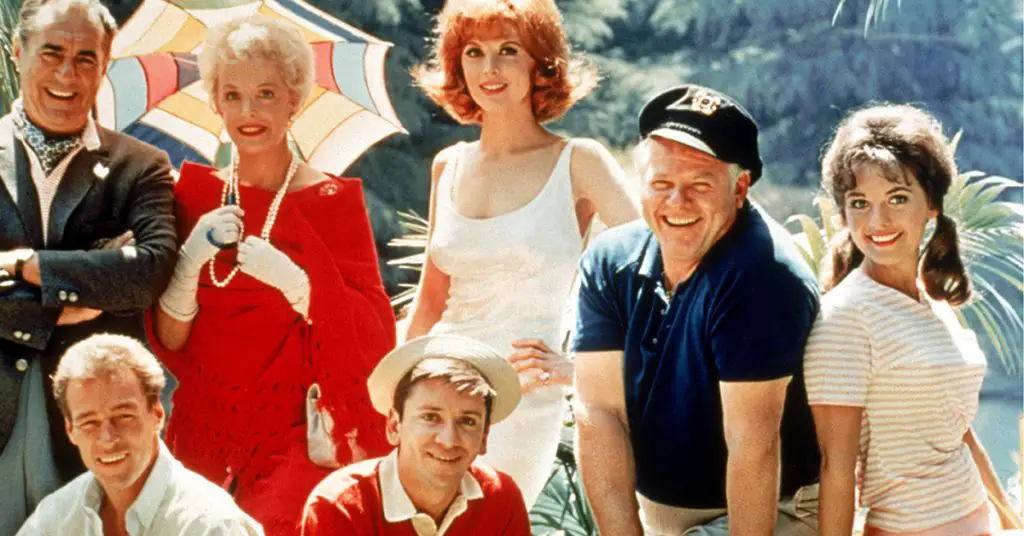
As for the episode that Wrong Way Feldman appears in, titled “Wrongway Feldman,” the episode really gets going when Gilligan discovers an old plane.
He runs to get everybody, and they all marvel over it, but as the Professor points out, “There’s only one problem, Gilligan. None of us knows how to fly.”
“Ah, we could learn, because the Skipper was on an aircraft carrier,” Gilligan says, and suddenly we get a little bit of backstory from several of the characters. Not much, but we’ll take what we can get on this series.
“Oh, a lot of good that’ll do us, Gilligan. I was a cook," the Skipper says.
“My roommate was a stewardess,” Ginger says.
“I knew a crop duster once in Kansas,” Mary Ann says.
“You see? With all that experience, we can do it,” Gilligan says.
“Gilligan, we haven’t got enough experience to fly a kite,” the Skipper says.
So they all sort of figure that they’re still stuck on the island.
Later, when Gilligan is cleaning off the plane, he notices some words written on the side.
“Hey, hey, look at this,” Gilligan says to everyone. “The Spirit of the Bronx.”
Of course, that’s more a joke toward Charles Lindbergh’s plane, the Spirit of St. Louis. Wrong Way Corrigan’s plane was called Sunshine. “I had always considered my plane as a little ray of sunshine,” Corrigan told reporters.
“The Spirit of the Bronx,” the Professor muses. “Say, that was Wrong Way Feldman’s plane.”
And we get a little backstory on Wrong Way Feldman, whose life story somewhat sounds like Wrong Way Corrigan’s, albeit embellished for comedy’s sake.
“That’s right,” the Skipper says. “The one that he used on his round-the-world trip.”
“Looks more, halfway around the world. Wrong Way Feldman. So that’s what happened to him," Mr. Howell says.
“It seems like yesterday,” Mrs. Howell says. “And it was really way back in the thirties.”
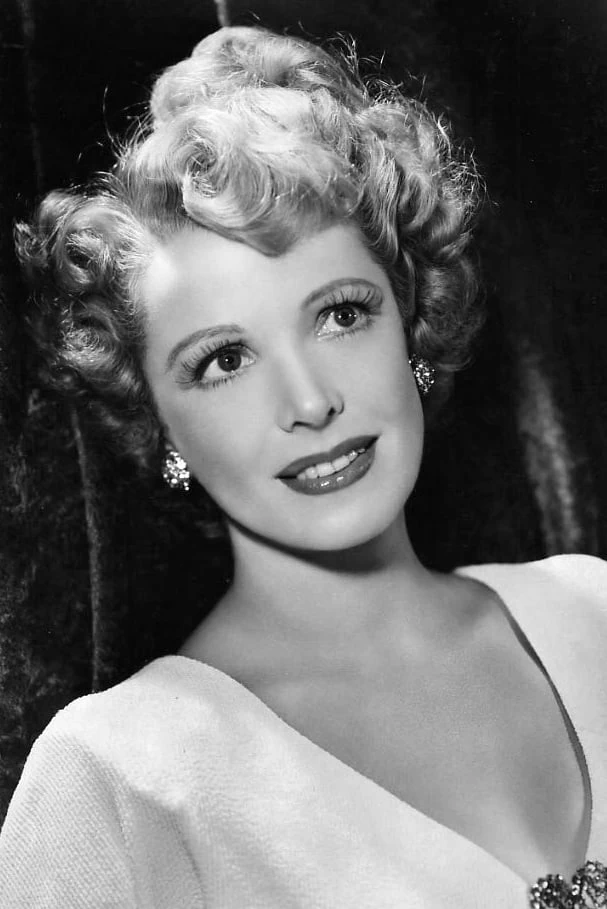
“I read all about him,” Gilligan says. “He was a great pilot.”
“Not as far as Howell Aircraft was concerned. We invested money in his first plane,” Mr. Howell says.
“Yes, that was the one that went nonstop from Chicago to New Orleans,” Mrs. Howell says.
“That was pretty good for those days,” the Skipper says, approvingly.
“He was supposed to go to Minneapolis. Fool flew the wrong way," Mr. Howell says.
“I guess that’s how he got his nickname, huh?” Gilligan asks.
“No, he got that during World War I," Mr. Howell explains. "He bombed his own airfield. Pow!”
“Regardless, he still did a lot for aviation,” the Professor says.
“And at least he was a pilot,” the Skipper says. “For my money, I wish he was here right now.”
Of course, not long after the Skipper says that, he gets his wish and Wrong Way Feldman emerges from the jungle and steps into the clearing.
What Wrong Way Corrigan Did After His Flight
Between Douglas Corrigan’s trans-Atlantic flight from New York to Dublin and Gilligan’s Island parodying that flight, a lot happened in the aviator’s life. Here’s a quick timeline:
The 1930s.
A few months after his flight across the Atlantic, Corrigan did the sensible thing one does in America: he cashed in on his fame. He wrote an autobiography called That’s My Story. In 1939, Corrigan starred as himself in the movie, The Flying Irishman.
The 1940s.
After all the hubbub died down, and he was no longer being invited to parades, Corrigan became a test pilot for a company called Douglas Aircraft during World War II (despite sharing the first name with Douglas Aircraft, Corrigan merely worked for the company and had nothing to do with its founding in 1921).
In 1946, Corrigan also unsuccessfully ran for the Senate as a member of the Prohibition Party – and lost.
Apparently his slogan -- “Soak the drunks with higher taxes” -- didn’t catch on.
Naturally, wherever Corrigan went, his reputation proceeded him. Most of us, if we made a silly error, we don’t have the news media reporting on it. Not Corrigan. In 1943, the Associated Press reported that at an airport, Corrigan boarded the wrong plane, headed in the wrong direction for the wrong destination.
Ah, those cut-ups at the Associated Press.
The 1950s.
Corrigan – who by this time had a wife and three sons – bought 20 acres of land and started growing orange trees. Corrigan occasionally flew, just enough to keep his license, but he wasn’t too impressed with how aviation was going.
"Flying today is different,” Corrigan told a reporter in 1957. “All buttons and jets. The ships are too hot, and the kids fly them sometimes before they know what flying is all about."
In 1957, Corrigan appeared on the TV game show series, To Tell the Truth, in which a celebrity panel asks three contestants questions to determine which people are lying and who is telling the truth.
The Sunshine, his airplane that he flew across the Atlantic, was packed up in boxes in his garage.
So Back to Wrong Way Feldman
While Douglas Corrigan was enjoying life at his orange grove, Gilligan’s Island was filming “Wrong Way Feldman.”
It was the fifth episode in the series, and it was the first to feature a guest star. Executive producer Sherwood Schwartz felt that the addition of Wrong Way Feldman’s character worked so well that having guest stars appear out of the blue would become a feature of the island and series.
Over the next three years, there would be a dizzying array of characters winding up on the deserted island, including a bank robber, a feral child, a surfer, a reclusive painter, a rock n' roll group, Russian cosmonauts, a Hollywood double and many more.
Even Wrong Way Feldman came back for a second appearance later in the first season.
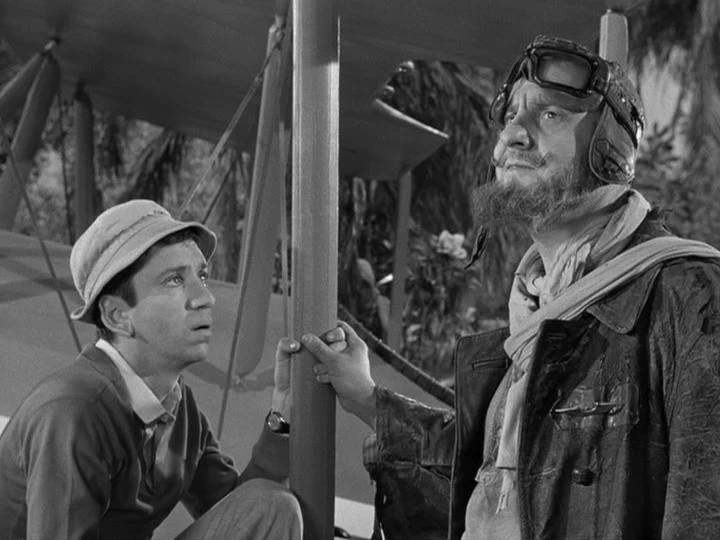
In his first appearance on the series, we learn that Wrong Way Feldman has been on the island since the 1930s because his engine doesn’t work. Fortunately, the Professor believes he can fix it, using spare parts from their marooned ship.
All is well. “Mr. Wrong Way, you’re the best thing that ever happened to us,” Gilligan says.
Well, not so fast. We later learn that Wrong Way decides he lacks the confidence and know-how to fly any longer. "I'm washed up, through," he tells Gilligan. "I am grounding myself."
Gilligan suggests Wrong Way teach him to fly a plane.
"Yeah, but Gilligan, I always fly the wrong way."
"That's okay. You point me in one direction, and I'll go in the other."
"It just might work,” Wrong Way says.
Well, I might as well speed up to what we all know what happens, whether you’ve seen the episode or not. Gilligan doesn’t fly off the island and save everyone. Wrong Way ends up flying the airplane, after all. Unfortunately for the castaways, he doesn't save them either.
At the end of the episode, the castaways listen to their radio and learn Wrong Way’s fate: “Wrong Way has told the authorities a strange story of a deserted island with a group of castaways who helped him fix his place. And the authorities have made every effort to investigate this possibility. Unfortunately, Wrong Way’s calculations are so confused, the mysterious island could be located anywhere between the Bay of Naples and the Arctic Ocean.”
The radio announcer then does a dig at Wrong Way Feldman, and in a sense, the real Wrong Way Corrigan: “Consider Wrong Way’s past reputation, this is obviously another fantastic tale created from Wrong Way’s vivid imagination.”
But then, the radio announcer subtly compliments the real Wrong Way Corrigan as well.
“In any event, Wrong Way Feldman is one of aviation’s great heroes, and he will long be remembered for the great heritage he leaves us.”
Indeed, at this point in Corrigan’s life, he was often appearing in newspapers’ “This year in history” columns and as the answer in trivia questions. Corrigan may have no longer been front page news, but he was hardly forgotten.
Wrong Way Feldman Returns to Gilligan’s Island
No need to rehash the plot of “The Return of Wrongway Feldman” at length, though it is a clever enough conceit. Wrong Way Feldman ends up in New York City and is so fed up with his time in civilization that he flies back to the deserted island.
Of course, if he was so bad at directions, how in the heck did he find the island again? Well, no matter. Wrong Way Feldman feels that the island is a “paradise” and doesn’t have any plans to go back to civilization, to the horror of the castaways.
"But Wrong Way, we're homesick. We miss the states,” Gilligan says.
Wrong Way Feldman retorts: “What's there to miss? All that hustle and bustle? The trains, the subways, the whistles, the noise, no privacy. Ho, ho, this is the life! Earth, trees, grass, nature.”
Feldman also isn't impressed with the capitalist society that the United States has become. He complains to Mr. Howell: “I tell ya, you couldn't stand it if you was there right now. Why, the stock market's gone crazy. People are making money, hand over fist. Land values are soaring, and the new tax cut. And the bank rates are going up. I tell ya, it's a sickness. Money, money, money."
Of course, Mr. Howell, being Mr. Howell, fights tears and now misses the United States more than ever.
The castaways try to change Feldman’s mind about leaving the island -- and he does, but not in the way that they hope.
Wrong Way Feldman flies off the island once again, but alas, instead of a rescue party turning up on the beach, Gilligan finds a note in a bottle that washes up on shore. The message reveals that the famed pilot has found another deserted island paradise and plans to stay there for awhile. His note implies that he’ll send help, if he ever makes it back to the states.
There seems to be no mention in print of his feelings about being parodied twice in Gilligan’s Island. Still, Wrong Way Corrigan had such a healthy sense of humor about his place in history, that one has to think he would have been well aware of the episodes – and gotten a kick out of them.
On the other hand, also based on what Corrigan said to the press over the years, he was a capitalist -- and was probably a little miffed that Gilligan's Island never (as far as its known) sent him a check for inspiring the character of Wrong Way Feldman.
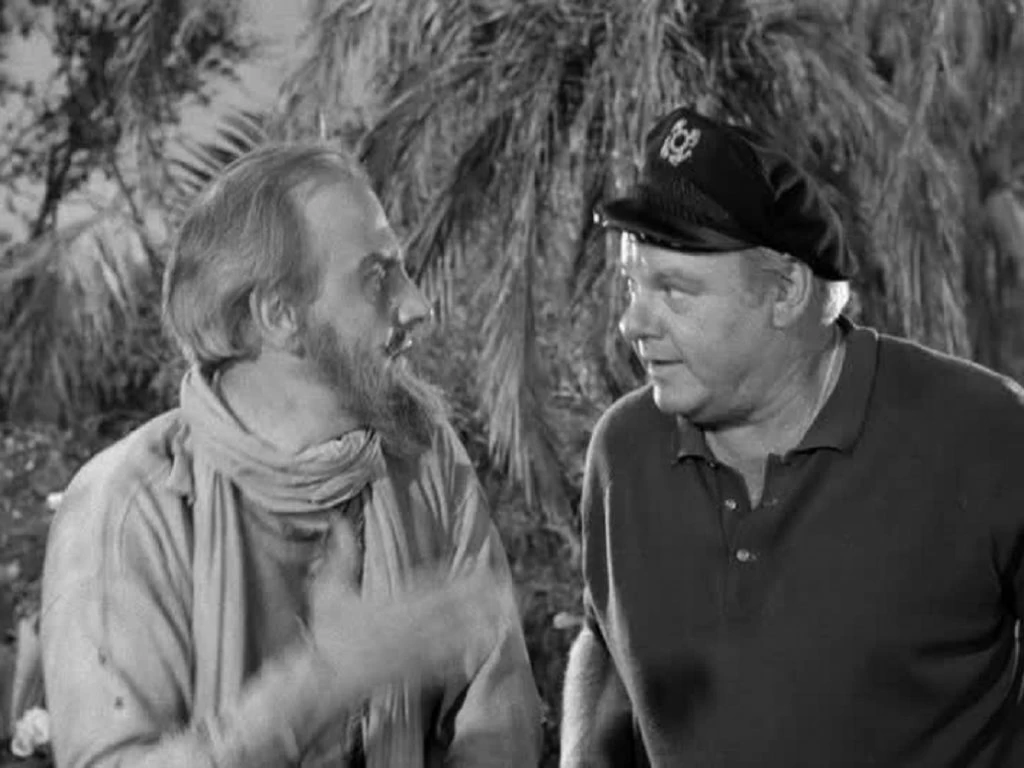
Douglas "Wrong Way" Corrigan’s Final Years
Douglas Corrigan lived a good long life, although not all of it was good. In 1966, his wife, Elizabeth, died. In 1970, Corrigan sold most of his land for a handsome sum to a housing development, due in part to the financial strain of running an orange grove too while grieving. Then, in 1972, there was even more grief. One of his sons, Roy, died in a plane crash on Catalina Island. According to one newspaper, Roy’s blue Camaro, Corrigan kept wrapped in cardboard in the garage for years, as something of a shrine.
That death, people said at the time, understandably almost destroyed the aviator. For a long time, Corrigan, who had already decided that he liked his privacy, practically walled himself off from the world. In fact, life started imitating art, in a sense, as Wrong Way Corrigan became more like Wrong Way Feldman. Corrigan wanted little to do with celebrity and fame or civilization. He became a recluse.
Corrigan ascended into the skies for the final time in 1995 at the age of 88.
Fortunately, Corrigan seems to have eventually found his way out of the darkness. There were hints and suggestions in his last couple decades that he hadn’t lost his sense of humor and still managed to find joy in the past and present. For instance, there was his mailbox that faced the wrong way, according to accounts from reporters in the 1970s.
And in 1984, Corrigan accepted an invitation for the opening of a Museum of Flight exhibit featuring an airplane similar to his beloved Sunshine. As part of the event, Corrigan rode in the back of a vintage car – traveling the wrong way down a one-way street.
In 1987, for the 49th anniversary – the idea was that this was a 50th anniversary being held in the wrong year – Corrigan participated in a “Wrong Way Corrigan Day” parade on Long Island.
In 1988, he got a lot of press for the actual 50th anniversary of his flight. Corrigan still was sticking to his story – that his flight happened due to a mistake, and that he never intended to fly across the Atlantic.
But he also offered up impish suggestions that maybe, just maybe, his flight hadn’t been an error.
He said to reporters in 1987, "I've told my story 10,000 times, so many times that I believe it myself. So why should I change it now?"
And in 1988 when a reporter asked if his mistake was an honest mistake, Corrigan replied, “I was never really too honest, you know.”
Corrigan attended an air show that year, and the 81-year-old, wearing the same leather jacket that he purchased 53 years earlier, agreed to bring his airplane out of storage. He also agreed to taxi it down a runway. He was so enthusiastic and excited about showing off his plane that the air show organizers began to get a little worried.
One of the airport officials told reporters that they would have men walking with the plane, hanging onto the wing tips, just in case Corrigan had any bright ideas about actually flying the plane.
There was even talk among them that later maybe Corrigan might want to sneak away from the crowd and perhaps it might be best to find a big rope and tie one end to the tail of Corrigan’s plane to a police car.
After all, he had broken the rules once before.
Where to watch Gilligan’s Island (at the time of this writing): Your best bet, these days, is MeTV. You can usually find three hours' worth of Gilligan’s Island on Sunday afternoons on the cable channel, MeTV.
Articles similar to this Gilligan’s Island piece: Well, if you enjoyed this article, you may enjoy an early TV Professor blog post about a Gilligan’s Island episode where Mr. Howell has a double – and we learn something about the history of identity theft.

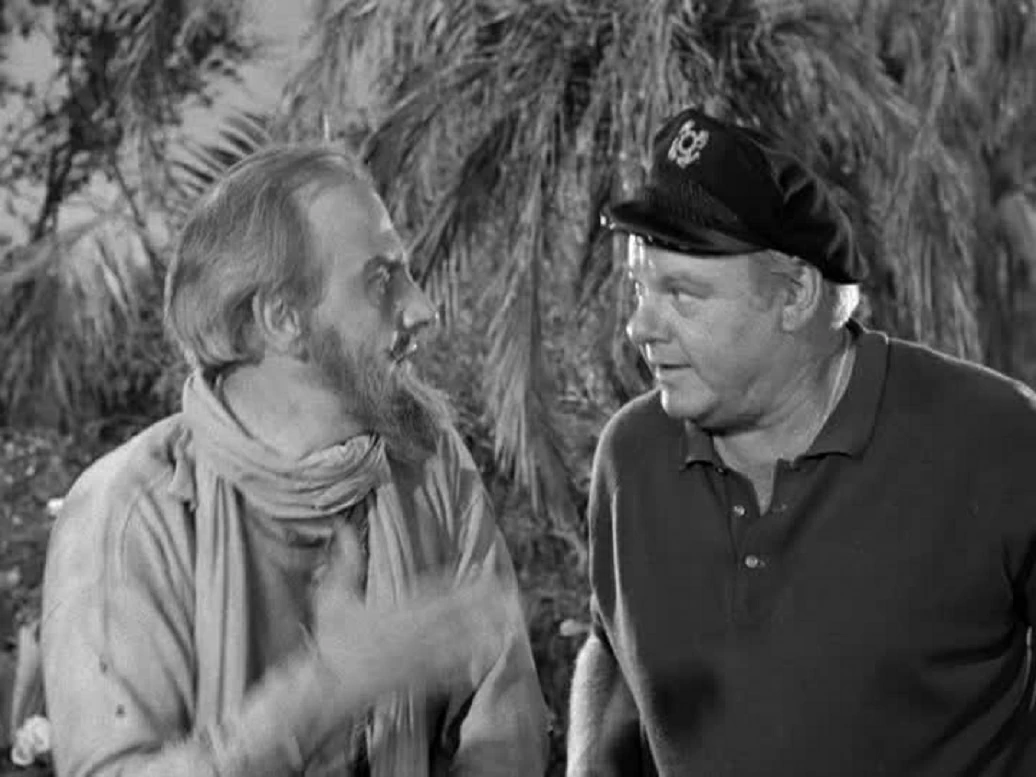
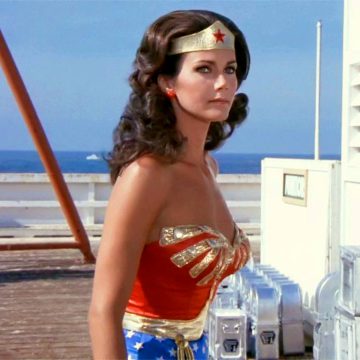
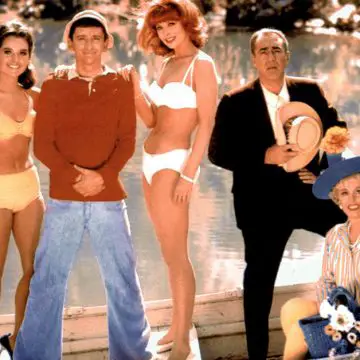
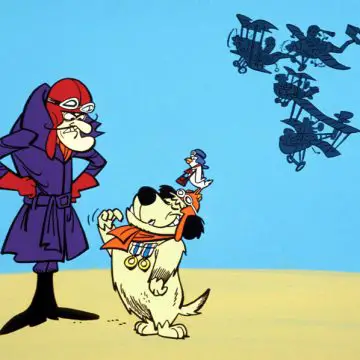

Leave a Reply